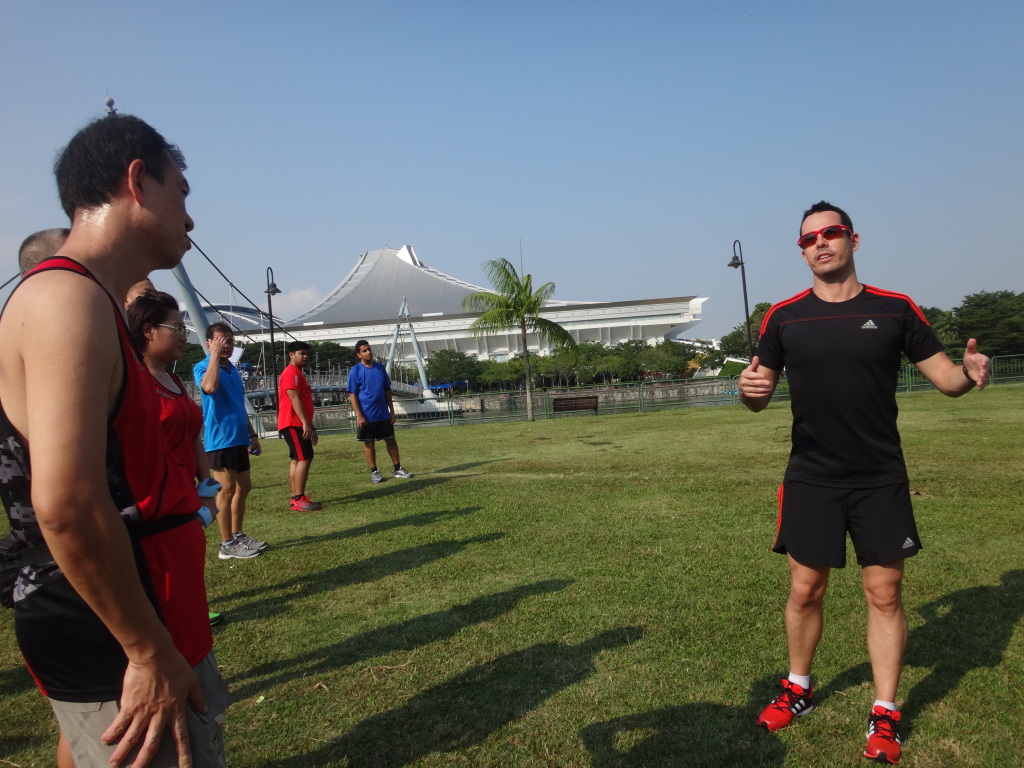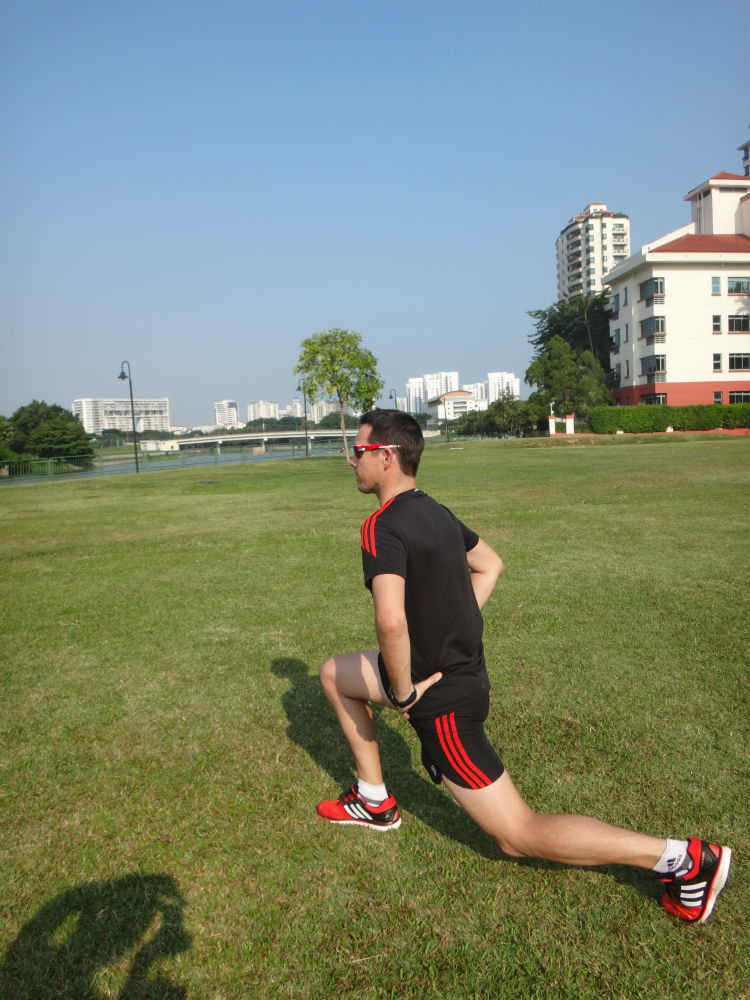To prepare runners for the Standard Chartered Marathon Singapore (SCMS), which takes place on 7 December, a series of informative talks cum running clinics are currently being held at the Singapore Sports Hub.
Theory session followed by a practical lesson
Last Saturday, the talk which was conducted by Jon Fong of the Journey Fitness Company, was about the dos and don’ts of marathon training and how to taper for a distance run.
And after the talk, Ben Pulham, also from Journey Fitness, gave a practical workshop demonstrating running and strength training drills for participants to incorporate into their training sessions.
Highlights of Jon Fong’s Talk
Here are some of the highlights from the talk.
Run for time and not distance
Many runners base their training runs on distance rather than time. However, Fong advises runners to base it on time instead.
That’s because for example, running a 10km uphill is very different to running a 10km on flat road. Obviously the uphill run will take a lot longer to complete and will also be many times more taxing to the body. So time will factor in parameters such as the harshness of the terrain.
Take time to recover after hard workouts
While training sessions are important to prepare for the race, recovery is also just as vital. If you do not give yourself enough time to recover after a strenuous session, your performance will decrease. At the same time, you may also get injured and be unable to make it to the starting line of that race you have been training so hard for.
It is important to eat for fuel
Many people may have initially taken up running to lose weight – and as a result, they are scared of putting on the kilos during the tapering phase. However, Fong says that this is the wrong approach to running. The body needs fuel to run, and if you do not eat properly, especially in the final few weeks leading up to the race, this is a recipe for disaster as the body will not be able to perform during the race.
However on the other hand, don’t go on an eating binge either – as the extra food will definitely be stored as unnecessary fats and you will be unable to get rid of it later. After all, the body can only store about 1,500 to 2,000 calories of carbohydrates – everything else will turn into fats.
The right approach to fuelling up in the days before a race, a phenomenon known by runners as carbo loading, should start about five days before the race and you should slowly increase your intake of carbohydrates and healthy fats.
Tapping into fats for fuel
Many runners use carbohydrates as fuel. But Fong says that by tapping into fats for fuel, it will help you to endure much longer distances of running – without needing to consume energy gels or isotonic beverages.
Unlike carbohydrates, the body can store 80,000 calories worth of fats, so this is a ready-made, yet untapped source of energy for athletes.
To unlock your fat burning potential, focus on consuming protein-rich foods such as beef, pork or tofu. Besides these, other foods that unlock fat burning include vegetables and light fruits that have very little sugar. At the same time, increase your consumption of healthy fats, such as nuts and avocados. This should preferably be done several months before the race – and you will have plenty of energy from fats to tap into.
Do not overdo your tapering
While many runners are aware that the tapering phase of marathon training is to allow them to rest and recover before the big race, some tend to go overboard – and rest too much. Fong advises runners not to do that – because the body will not know how to react to the sudden drop in mileage and intensity.
Instead, the correct way to do tapering is to drop the training volume by 10 to 15 per cent each week. The week before the race, you should have a reduction of about 40 to 50 per cent in training volume.
When to start tapering
The week that you should begin tapering is based on the distance that you will be covering on race day. The longer your race, the more time you should allow for tapering. For example, five to seven days are needed to taper for a 10km race, while two weeks are necessary for a half marathon (21km) run. For a full marathon (42km) race, you should allow three weeks to taper.
Highlights from Ben Pulham’s Practical Session
After the talk, Pulham took us to the open field near the National Stadium for some running drills as well as strength training drills. For each drill, we did it twice and for the running drills, we did approximately 25 metres each time.
Practising running and strength training drills
The running drills included side step shuffling and a series of march/skip drills. These help to improve our balance and coordination, and ultimately our cadence and stride frequency in running.
The strength-training drills comprised of moving lunges and body weight squats. These help to strengthen our core muscles, which will aid us in running, make us stronger and faster runners.
While these drills felt pretty okay at first, I found myself getting pretty exhausted towards the end of the session – and the searing heat from the hot afternoon sun didn’t help my cause, either. But if I want to improve as a runner, I guess I will probably be practising a lot of these drills and trying to incorporate them into my weekly running sessions!




Leave a Comment